Welding with any wire welding process — MIG/MAG, pulsed MIG or flux cored — depends on smooth feeding performance, ease of operation, control over welding variables, durability and, in many situations, portability. Your current wire feeder may be getting the job done, but it may also have hidden costs and unnecessary headaches. Because of recent technology advancements, now is a good time to reexamine how choosing the right wire feeder could contribute as much to your bottom line as choosing the right power source.
By Arne Lagerkvist, Global Product Manager – Heavy Industrial Welding Equipment
Equipment Solutions Group, ESABA New Breed
Whether on a shop floor, ship or construction site, portable equipment that puts the feeder closer to the welding location helps operators complete work faster and with greater precision, such as by viewing a feeder’s digital display to confirm settings or adjust parameters without long walks back to the power source. Previously, however, gaining portability meant sacrificing one or more aspects of performance. As a result, users were forced to choose between two basic feeder categories. “Shop feeders” offered excellent feeding performance and additional controls, but they had limited protection in extreme environments. A plastic case for the wire spool was about the limit. Mobility mostly consisted of mounting the feeder on a trolley. Portable feeders with enclosed cases offered mobility and durability in harsh conditions, but they fell short on features and ability to feed a broad spectrum of wire diameters.
Now, through extensive voice of customer research and extensive engineering investments, these two categories have merged into a new, third category: the advanced portable wire feeder that combines performance, portability and durability. This article highlights attributes users can now find in portable wire feeders and links them to how they improve operations.
Wire Feeding Performance
The basic job of the wire feed mechanism is to deliver wire through the torch liner to the contact tip with a smooth, consistent wire feed speed during welding, as well as offer a controlled speed during arc starts and stops. The drive mechanism should not crush or scrub the wire, as that generates shavings which in turn clog the liner, hinder smooth feeding and promote burn backs.
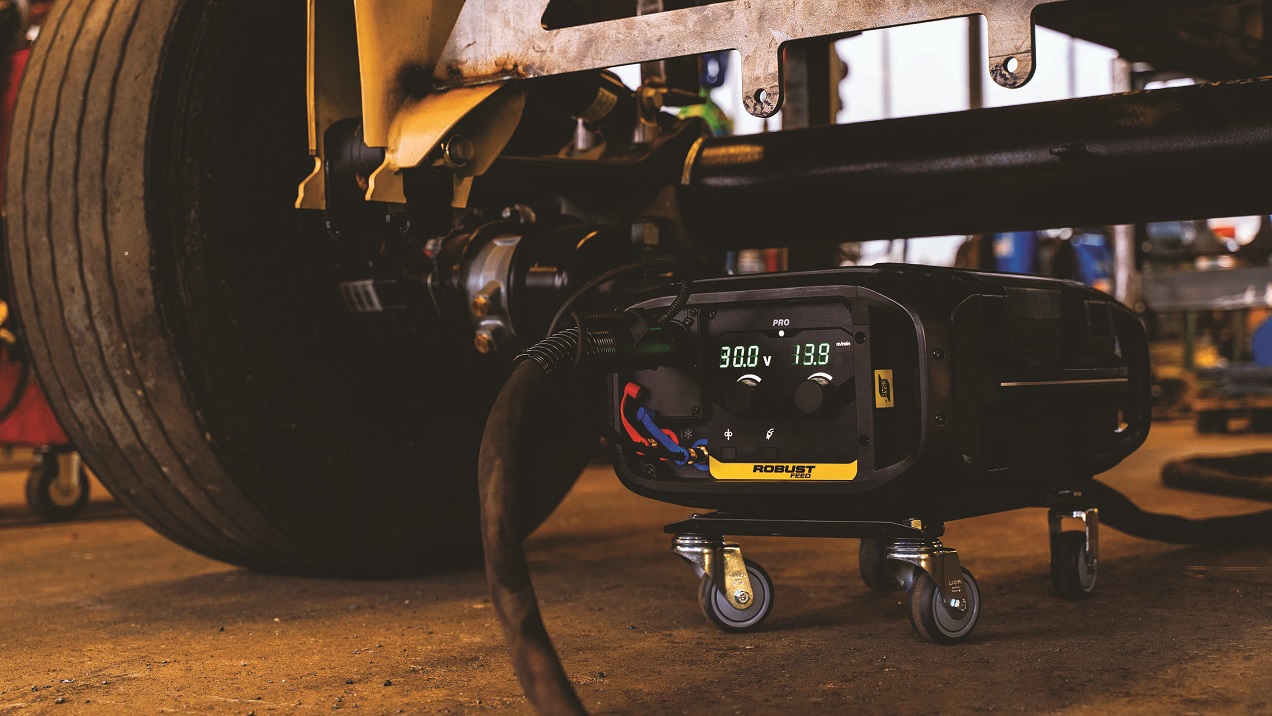 When performance symptoms occur (e.g., arc instability caused by wire slipping), many operators tend to apply additional pinch force to the wire by increasing the pressure on the adjusting screw. This usually does not fix the problem. In many cases, it may create additional wire feeding problems, such as generating more wire shavings. The solution is to look for a well engineered drive stand in the first place.
When performance symptoms occur (e.g., arc instability caused by wire slipping), many operators tend to apply additional pinch force to the wire by increasing the pressure on the adjusting screw. This usually does not fix the problem. In many cases, it may create additional wire feeding problems, such as generating more wire shavings. The solution is to look for a well engineered drive stand in the first place.
To start, consider that a four-roll system offers some inherent advantages over a two-roll system, as it doubles the amount of drive roll surface area in contact with the wire. Similarly, larger diameter drive rolls also increase wire contact area, as does drive roll groove design. More gripping area enables feeding without deforming the wire through longer torch cables, bends in the cable and even with softer cored and aluminium wires. A good four-roll system allows you to run larger diameter (up to 2.0 mm solid wires and 2.4 mm cored wires) and smaller diameter (0.6 and 0.8 mm) hard wires, as well as weld at speeds as low as 0.8m/min and as fast as 25m/min.
New technological advancement also controls the drive motor differently in that it’s not driven in one direction; instead, it is controlled in two directions. This provides incomparable feeding performance during starts, at lower speeds and enhanced control of the wire speed overall. Combined with a precise feeding mechanism that has a lower level of backlash (“play”) in the rolls, further precision can also be achieved. This type of drive stand is actually suitable for a robotic system but is now available in portable units, which is a major development.
Enhanced Controls
Quality issues occur most frequently at the start or end of the weld, so advanced portable feeders may offer a host of functions to improve results, including:
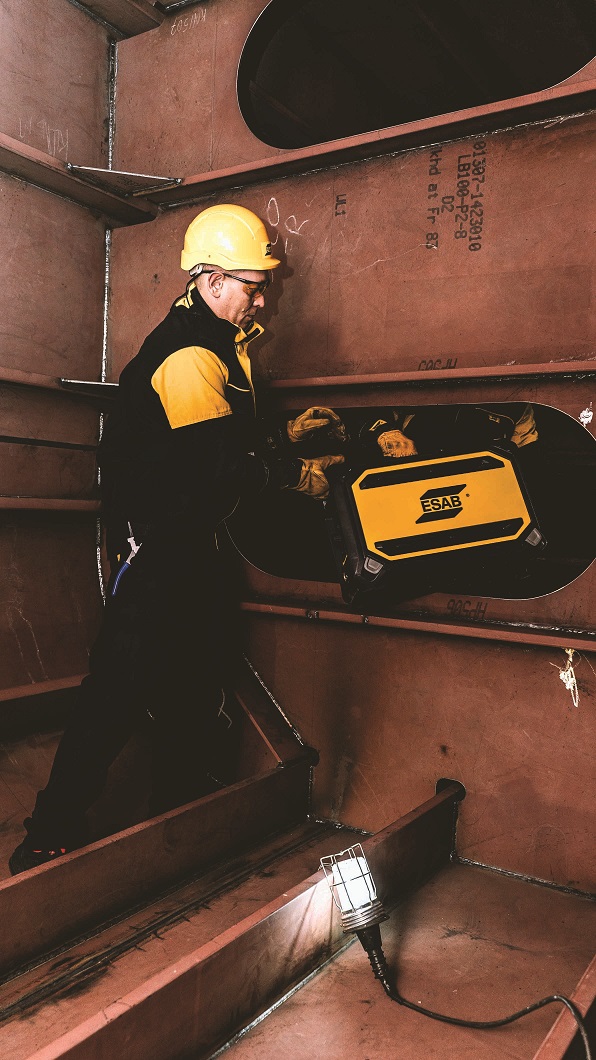
-
Run-in speed control (also called creep) reduces the speed at which the wire approaches the plate, then ramps up to full welding speed when the system senses the arc is established. The additional time preheats the electrode, promotes a more positive arc start, reduces spatter and promote better fusion. Some feeders offer a hot start function to increase total power for a few milliseconds during the start of the weld, which also helps prevent cold lap.
-
Wire feeders with a crater fill function ramp down parameters at the end of the weld to fill the crater at a lower wire feed speed and/or voltage level, which can prevent crater cracking and avoid melting the edges of the plate.
-
Gas pre-flow and post-flow control enable the operator to set the duration of gas flow times. These functions are especially helpful in applications where gas coverage is critical, notably stainless steel.
-
Short Circuit Termination (SCT) technology sharpens the end of the solid MIG wire at the termination of a weld to promote a positive next arc start. SCT technology also eliminates the need for the operator to clip the wire. In an operation with numerous weld stops and starts, the time savings will quickly add up.
-
A burnback function controls the amount of wire that continues to feed after the operator releases the trigger, leaving an optimal wire stickout so the operator does not need to clip the wire to length.
-
On feeders with 2T/4T control, the 2T mode is for standard On/Off operation. The 4T (“trigger hold”) feature is like cruise control for the welder. After pressing and holding the trigger for a few seconds, the operator can release the trigger and the system continues to weld, reducing hand fatigue. To terminate the weld and initiate the downslope function (if enabled), the operator presses and releases the trigger again.
-
For those worried about operators wasting time adjusting settings for different jobs, do not worry. Advanced wire feeders offer memory settings that enable operators to set, store and recall parameters with the push of a few buttons.
-
Advanced Controls
Many of the functions above have been standard controls on shop feeders for years but have now migrated into portable feeders as managers want to improve welding results. Very advanced feeders also offer some additional functions that can immensely improve quality and consistency:
-
A limit function prevents the operator from welding with parameters outside of weld specifications.
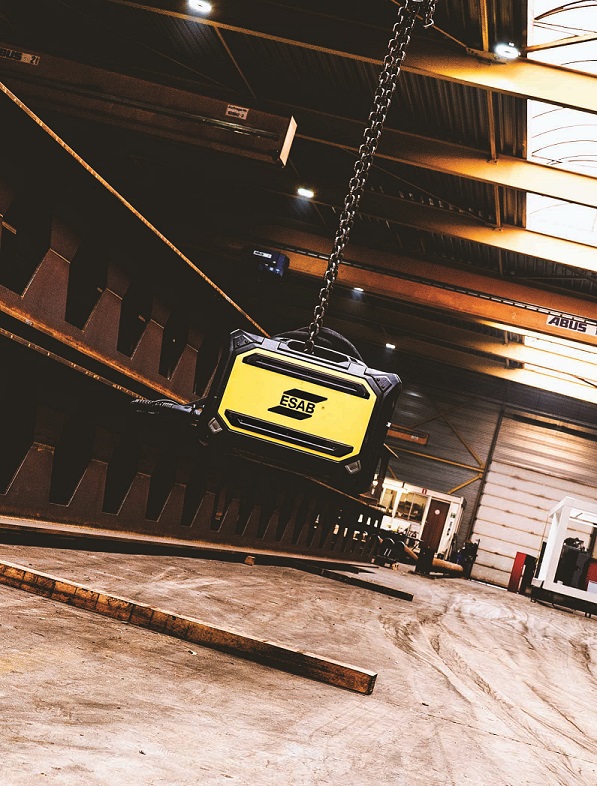
-
A function called “quick set” (or “smart MIG” or something similar) automatically optimises the short circuit arc for the gas/wire combination installed. After a few seconds of welding, the system adapts welding parameters to match an operator’s individual welding style, notably compensating for variations in contact tip to work distance and torch angle. This lets the operator focus on torch mechanics instead of worrying about whether they have set proper parameters.
-
Preprogrammed synergic lines have optimised parameters for the wire type, wire diameter, shielding gas and process selected, speeding set-up.
- Synergic lines for pulsing MIG can save many hours of process development time. To begin pulsed welding, operators simply select the synergic line. The system then provides optimum dynamic arc control to maintain consistent penetration and weld bead appearance, automatically adjusting for variations in arc length and wire feed speed. If needed, operators can use the wire feed speed control to fine tune the arc and all pulsing parameters will be automatically adjusted.
Overall, advanced feeders help less experienced or moderately skilled welders produce better results and can transform good welders into great welders.
-
Many Facets of Portability
Weight is the first aspect of portability. Most enclosed feeders that can hold a 300 mm wire spool weigh in the neighborhood of 17 - 19 kg when empty. However, after adding a spool of wire, minor weight differences between models become less important. For example, how does the feeder handle feel in the operator’s hand, and how does the side of the feeder feel against the operator’s leg when carried? Is it comfortable and smooth? Note that feeders with a longer center handle let the operator adjust hand placement for balanced, one-hand carry. Next consider that feeders with handles on the front and back of the unit are significantly easier to lift with two hands, as well as pass through a manhole or small opening.
For lifting feeders with a crane, a standard procedure in shipyards and offshore operations, look for units that have crane-rated handles. Given the rugged nature of the welding industry, operators are also going to move the feeder by sliding it along the floor or dragging it by the cables, and feeder case designs with reinforced walls and built-up wear areas will last longer. One of the more common feeder failures occurs when the power cable or gas connections shear off from the rear of the unit. To address this issue, some feeders now have a twist-lock design that secures the power cable to the rear of the unit, as well as have internal hose and cable connections. As a result, there is no strain or risk from shearing off when operators drag or lift the feeder, such as between levels of a job site or in the hull of a ship.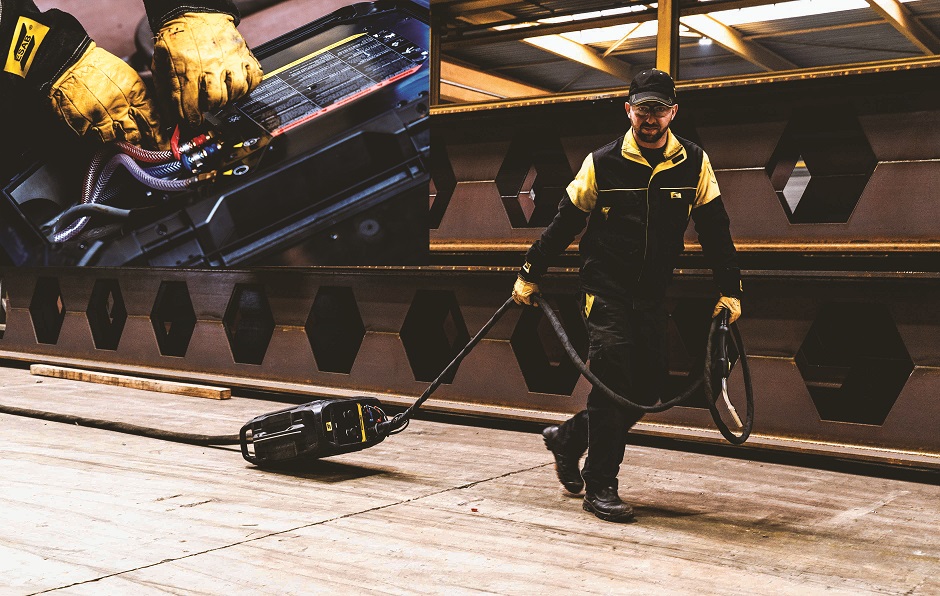
Lifting or dragging by the cable may not be recommended, but designs must accommodate reality. In a similar spirit, consider optional wheel kits that mount on the bottom or sides of a feeder. Putting the wheel kit on the side of the feeder creates a low, flat profile that is more stable. In applications such as trailer manufacturing or structural steel fabrication, the operator can easily move the feeder under objects and the low center of gravity enables pulling the feeder past obstacles and across uneven floors without risk of it tipping over.
Portability means nothing without durability, and wire feeders in heavy industrial environments take a beating. Case designs vary from metal, to reinforced plastic to a combination of both. All can work well when designed properly to prevent transfer of shock, providing much greater protection for the electronics than shop units. Be cautious of units with exposed metal screws that could transfer the welding current if the feeder is on a metal surface, such as a ship deck plate.
Most portable feeders have an IP23 rating, which is defined as “protected from touch by fingers and objects greater than 12 mm” and “protected from water spray less than 60 degrees from vertical.” The most robust systems available have an IP44 rating, meaning that all sensitive components are protected against solid objects that are bigger than 1 mm and water splashing from all directions. They are literally sealed against weather, dirt, metal shavings and other contaminants. To protect against moisture that could promote hydrogen absorption in cored wires or oxidation of any carbon steel wire, note that IP44-rated feeders also have the option for an internal heater kit to drive off moisture.If your current wire feeders do not have a majority of these features and benefits, it might be time to re-evaluate your equipment. Such feeders minimise maintenance headaches, promote both uptime and better weld quality and help increase operator skill — all of which lead to greater profits.
Metal-Interface takes great care to protect your privacy: when you submit a request or ask a question, your personal information is passed on to the supplier concerned or, if necessary, to one of its regional managers or distributors, who will be able to provide you with a direct response. Consult our Privacy Policy to find out more about how and why we process your data, and your rights in relation to this information. By continuing to browse our site, you accept our terms and conditions of use.
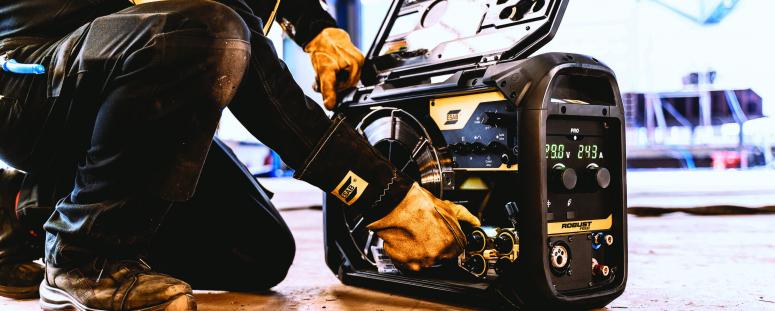 Welding with wire Technical article
Welding with wire Technical articleTechnology Advances Mean It’s Time to Re-Evaluate Your Wire Feeder
